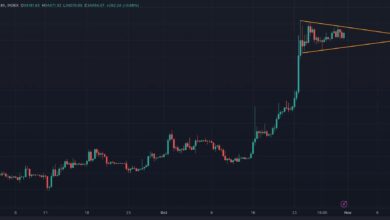
Bitcoin Price Today for Beginners Guide Complete 2025 Investment Tutorial
Understanding the Bitcoin price today for beginners is essential for anyone entering the cryptocurrency market in 2025. With Bitcoin currently trading at approximately $116,000, new investors need comprehensive knowledge about this digital asset’s price movements, market dynamics, and investment strategies. This Bitcoin price today for beginners guide will walk you through everything from basic concepts to advanced trading techniques.
Bitcoin’s remarkable journey from pennies to over $100,000 demonstrates the importance of understanding market fundamentals before investing. Whether you’re curious about daily price fluctuations or long-term investment strategies, this guide provides the knowledge foundation every beginner needs to navigate the complex world of Bitcoin trading successfully.
What is Bitcoin and Why Does Its Price Matter
Bitcoin represents the world’s first successful cryptocurrency, created in 2009 by the pseudonymous Satoshi Nakamoto. As a decentralized digital currency operating on blockchain technology, Bitcoin eliminates the need for traditional financial intermediaries like banks or payment processors. This revolutionary approach to money creates unique pricing dynamics unlike traditional assets.
The significance of Bitcoin’s price extends far beyond simple monetary value. It serves as a barometer for the entire cryptocurrency market, often dictating the direction of thousands of other digital assets. When Bitcoin’s price rises, it typically signals increased confidence in cryptocurrency adoption, regulatory clarity, and technological advancement throughout the digital finance ecosystem.
How Bitcoin Price Today for Beginners Guide Helps Your Investment Journey
Current market data shows Bitcoin trading around $116,000-$117,000, representing significant volatility compared to traditional assets. This Bitcoin price today for beginners guide emphasizes the importance of real-time price monitoring using reliable cryptocurrency exchanges and market analysis platforms. Understanding these price movements helps beginners make informed investment decisions.
Beginners should understand that Bitcoin prices fluctuate 24/7, unlike traditional stock markets with specific trading hours. This constant price movement creates both opportunities and risks that require careful consideration and strategic planning. Successful Bitcoin investors learn to navigate these price fluctuations through education and disciplined investment approaches.
Understanding Bitcoin Market Fundamentals
Bitcoin operates on a fixed supply schedule with only 21 million coins ever to be created. This scarcity model fundamentally differs from traditional currencies that central banks can print at will. The limited supply creates deflationary pressure as demand increases, potentially driving long-term price appreciation for early adopters.
Network effects play a crucial role in Bitcoin’s value proposition. As more individuals, businesses, and institutions adopt Bitcoin, the network becomes more valuable and useful. This increased utility often translates to higher prices as demand outpaces the slowly increasing supply of new bitcoins entering circulation.
Key Factors Influencing Bitcoin Price Movements
Institutional adoption represents one of the most significant drivers of Bitcoin price increases. Major corporations like Tesla, MicroStrategy, and Square have allocated billions from their treasury reserves to Bitcoin, creating substantial upward pressure on prices. When large institutions purchase Bitcoin, they remove supply from the market while signaling confidence to other investors.
Regulatory developments significantly impact Bitcoin prices across global markets. Positive news, such as Bitcoin ETF approvals or favorable government statements, typically boost prices, while regulatory crackdowns or restrictions can cause substantial price declines. Smart investors monitor regulatory trends to anticipate potential market movements and adjust their strategies accordingly.
Bitcoin Price Analysis and Technical Indicators
Technical analysis involves studying price charts, trading volumes, and historical patterns to predict future price movements. Moving averages help smooth out short-term price fluctuations, revealing underlying trends that guide investment decisions. The 50-day and 200-day moving averages are particularly important for identifying long-term price directions and potential reversal points. The
Relative Strength Index (RSI) measures whether Bitcoin is overbought or oversold at current price levels. RSI values above 70 typically indicate overbought conditions that may lead to price corrections, while values below 30 suggest oversold conditions that could present buying opportunities. Combining multiple technical indicators provides more reliable trading signals than relying on single metrics.
Current Market Trends and Price Predictions for 2025
Based on recent market analysis, Bitcoin demonstrates strong bullish momentum with expert predictions ranging from $100,000 to $155,000 throughout 2025. Factors supporting these optimistic projections include increased institutional adoption, regulatory clarity, and growing mainstream acceptance of Bitcoin as both a store of value and payment method.
However, beginners must understand that cryptocurrency markets remain highly volatile and unpredictable. While technical analysis and fundamental factors support bullish scenarios, external events such as regulatory changes, economic downturns, or technological issues could significantly impact price trajectories. Maintaining realistic expectations and proper risk management remains essential for successful Bitcoin investing.
How to Track Bitcoin Price Today: Essential Tools

Popular cryptocurrency exchanges like Coinbase, Binance, and Kraken provide real-time Bitcoin pricing with user-friendly interfaces suitable for beginners. These platforms offer additional features, including price alerts, historical charts, and educational resources that help new investors understand market dynamics. Choosing reputable exchanges ensures accurate pricing data and secure trading environments.
Market analysis platforms such as CoinMarketCap and CoinGecko aggregate Bitcoin price data from multiple exchanges worldwide. These comprehensive resources provide market capitalization data, trading volumes, price history, and news updates that influence Bitcoin prices. Mobile applications enable real-time price monitoring and instant notifications about significant market movements throughout the day.
Investment Strategies for Bitcoin Beginners
Dollar-cost averaging (DCA) involves purchasing fixed dollar amounts of Bitcoin at regular intervals, regardless of current market prices. This strategy helps reduce the impact of price volatility and eliminates the stress of trying to time market entries perfectly. For example, investing $100 monthly in Bitcoin over twelve months provides exposure to various price points and potentially reduces average purchase costs.
Long-term holding or “HODLing” represents another popular strategy where investors purchase Bitcoin and maintain their positions for extended periods, typically years. This approach relies on Bitcoin’s historical long-term price appreciation despite short-term volatility. Successful HODLing requires strong emotional discipline and conviction in Bitcoin’s long-term value proposition as digital gold.
Setting Investment Goals and Risk Tolerance
Before investing in Bitcoin, beginners should clearly define their investment goals, time horizons, and risk tolerance levels. Bitcoin investment should represent only a portion of a diversified investment portfolio, typically 5-10% for conservative investors. Consider factors such as age, income stability, existing savings, and financial obligations when determining appropriate allocation amounts.
Risk assessment involves understanding Bitcoin’s potential for both significant gains and substantial losses. While Bitcoin has historically provided impressive returns over long periods, short-term volatility can be extreme with price swings of 20-50% occurring within days or weeks. Only invest amounts you can afford to lose completely without impacting your financial security or wellbeing.
Understanding Bitcoin Wallets and Storage Security
Hot wallets remain connected to the internet, providing convenient access for frequent trading but exposing funds to potential cybersecurity risks. Examples include exchange wallets, mobile applications, and desktop software wallets. While convenient for active trading, hot wallets should only store amounts needed for regular transactions due to their increased vulnerability to hacking attempts.
Cold wallets store Bitcoin offline, offering superior security for long-term holdings but requiring more technical knowledge to operate safely. Hardware wallets like Ledger and Trezor represent popular cold storage solutions that provide excellent security while remaining relatively user-friendly. For significant Bitcoin holdings, cold storage represents the gold standard for security and peace of mind.
Security Best Practices for Bitcoin Protection
Never share private keys or seed phrases with anyone, as these provide complete access to your Bitcoin holdings. Store backup information securely in multiple physical locations, preferably in fireproof safes or safety deposit boxes. Use strong, unique passwords for all cryptocurrency accounts and enable two-factor authentication whenever possible to prevent unauthorized access.
Phishing attacks target cryptocurrency users through fake websites and emails designed to steal login credentials and private keys. Always verify website URLs carefully and never click suspicious links in emails claiming to be from cryptocurrency exchanges. Bookmark legitimate exchange websites and access them directly rather than through search engines or email links.
Tax Implications and Legal Considerations
Bitcoin transactions may trigger taxable events in most jurisdictions, including capital gains taxes when selling Bitcoin for profit. Tax treatment varies by country and region, but most require reporting cryptocurrency gains and losses on annual tax returns. Keep detailed records of all Bitcoin transactions, including purchase dates, amounts, prices, and purposes for accurate tax reporting.
Bitcoin’s legal status varies globally, with some countries embracing cryptocurrency adoption while others impose restrictions or complete bans. Stay informed about regulatory developments in your jurisdiction and consult qualified tax professionals familiar with cryptocurrency regulations. Compliance with local laws ensures legal trading activities and helps avoid potential issues with tax authorities.
Common Beginner Mistakes to Avoid
Fear of missing out (FOMO) often drives beginners to make impulsive investment decisions during price rallies, frequently resulting in purchases at local price peaks. Similarly, panic selling during price declines can lock in losses and prevent recovery when markets rebound. Develop predetermined investment strategies and stick to them regardless of short-term market emotions or social media hype.
Overinvestment represents another common mistake where beginners allocate too much of their wealth to Bitcoin. Never invest more than you can afford to lose completely in any cryptocurrency. Maintain adequate emergency funds and continue contributing to traditional retirement accounts and diversified investment portfolios alongside Bitcoin investments to ensure overall financial stability.
Getting Started with Your First Bitcoin Purchase
Research multiple cryptocurrency exchanges to find platforms that meet your specific needs regarding fees, security measures, payment methods, and user interface preferences. Popular beginner-friendly options include Coinbase, Gemini, and Cash App, which offer simple purchasing processes and educational resources. Complete identity verification processes required by regulated exchanges to ensure compliance and enable higher transaction limits.
Start with small amounts to familiarize yourself with the purchase process and platform functionality before making larger investments. Most exchanges support various payment methods, including bank transfers, debit cards, and credit cards, each with different fee structures and processing times. Consider transaction costs when choosing payment methods, as some options carry higher fees but may offer faster processing speeds.
Supply and Demand Dynamics in Bitcoin Markets

Bitcoin’s programmed scarcity creates unique supply dynamics that influence long-term price trends. With only 21 million bitcoins ever to be created and approximately 19.9 million already in circulation, the remaining supply decreases steadily over time. This deflationary monetary policy contrasts sharply with traditional currencies subject to inflationary pressures from central bank money printing.
Demand for Bitcoin continues to grow from multiple sources, including individual investors, institutional buyers, and emerging market adoption. Countries experiencing currency devaluation or capital controls often see increased Bitcoin adoption as citizens seek to preserve wealth. This growing global demand, combined with limited supply, creates favorable conditions for long-term price appreciation.
Market Sentiment and Media Impact on Prices
Public perception and media coverage significantly influence Bitcoin price movements in the short term. Positive news about institutional adoption, technological developments, or regulatory clarity typically boosts investor confidence and drives buying pressure. Celebrity endorsements and mainstream media coverage can create viral adoption waves that rapidly increase demand and prices.
Social media platforms, particularly Twitter, Reddit, and YouTube, serve as important sentiment indicators that experienced traders monitor for market insights. Negative news coverage, security breaches, or regulatory concerns can create fear, uncertainty, and doubt (FUD) that leads to selling pressure and price declines. Understanding media cycles helps investors separate temporary sentiment from fundamental value drivers.
The Role of Bitcoin Mining in Price Formation
Bitcoin mining involves using computational power to process transactions and secure the network while earning newly created bitcoins as rewards. Mining difficulty adjusts automatically every two weeks to maintain consistent block times, ensuring predictable supply increases regardless of total network mining power. This mechanism creates price support as miners must cover electricity and equipment costs.
The halving event, occurring approximately every four years, reduces mining rewards by 50% and historically correlates with significant price increases in subsequent months. The next halving is expected around 2028, when block rewards will decrease from 3.125 to 1.5625 bitcoins. This supply reduction often creates anticipation and buying pressure that drives price appreciation before and after halving events.
Bitcoin’s Correlation with Traditional Financial Markets
Bitcoin’s relationship with traditional financial markets evolves constantly, sometimes trading independently and other times showing strong correlations with stocks or gold. During certain periods, Bitcoin acts as a risk asset correlated with technology stocks, while in others, it functions as a hedge against inflation and currency debasement like gold or bonds.
Understanding these correlation patterns helps investors assess portfolio diversification benefits and potential risks during different market conditions. When Bitcoin correlates strongly with traditional markets, it may not provide the portfolio protection benefits that many investors seek. Monitoring correlations helps inform asset allocation decisions and risk management strategies.
Environmental Considerations and Sustainable Mining
Bitcoin mining’s energy consumption has drawn criticism from environmental groups and some governments concerned about carbon emissions. However, the industry is increasingly adopting renewable energy sources, with some estimates suggesting over 50% of mining operations now use sustainable energy. This transition addresses environmental concerns while maintaining Bitcoin’s security and decentralization.
The development of more efficient mining hardware and the Lightning Network for faster transactions may reduce Bitcoin’s environmental impact while preserving its security features. Some mining operations now use excess renewable energy that would otherwise be wasted, creating economic incentives for clean energy development and potentially supporting environmental goals.
International Regulatory Landscape and Adoption
Major economies, including the United States, European Union, and the United Kingdom, continue developing comprehensive cryptocurrency regulations that provide clarity for institutional adoption. Clear regulatory frameworks typically reduce market uncertainty and encourage mainstream financial institutions to offer Bitcoin-related services to their customers, expanding overall market participation and potentially supporting higher prices.
Countries like El Salvador have adopted Bitcoin as legal tender, while others maintain restrictive policies or outright bans. These varying regulatory approaches create arbitrage opportunities and affect regional Bitcoin adoption rates. Positive regulatory developments in major markets often create bullish sentiment that spreads globally through interconnected cryptocurrency exchanges.
Bitcoin as Digital Gold and Store of Value
Bitcoin increasingly functions as a store of value similar to gold, particularly during periods of inflation or economic uncertainty. Unlike gold, Bitcoin offers superior portability, divisibility, and verification properties while maintaining scarcity and durability. These characteristics position Bitcoin as “digital gold” for the internet age, appealing to investors seeking alternatives to traditional store-of-value assets.
Institutional investors and wealth managers now include Bitcoin in portfolios specifically for its store-of-value properties and potential hedge against currency debasement. This “digital gold” narrative supports long-term price appreciation as more investors recognize Bitcoin’s unique monetary properties and allocate portions of their wealth to cryptocurrency for portfolio diversification and inflation protection.
Future Technological Developments and Price Catalysts
The Lightning Network and other second-layer scaling solutions improve Bitcoin’s transaction speed and reduce fees, potentially increasing adoption for daily payments. These technological improvements address scalability concerns and expand Bitcoin’s utility beyond simple value storage, creating additional demand from merchants and consumers seeking efficient payment solutions.
Smart contract functionality through sidechains and improved programmability may expand Bitcoin’s use cases into decentralized finance (DeFi) applications. Enhanced functionality beyond basic value transfer could drive additional institutional and developer interest, potentially supporting higher valuations as Bitcoin’s utility and addressable market expand significantly.
Building a Balanced Bitcoin Investment Portfolio
Professional portfolio management principles apply to Bitcoin investing, including asset allocation, regular rebalancing, and comprehensive risk assessment. Bitcoin should complement rather than replace traditional investments like stocks, bonds, and real estate. Most financial advisors recommend limiting cryptocurrency exposure to 5-10% of total investment holdings to maintain overall portfolio stability.
Consider Bitcoin as part of an alternative asset allocation that includes commodities, REITs, and other non-traditional investments. Regular portfolio rebalancing ensures Bitcoin’s allocation remains within target ranges despite price volatility. This disciplined approach helps capture gains during bull markets while maintaining diversification during challenging periods.
Long-term vs Short-term Bitcoin Investment Approaches
Long-term Bitcoin investment strategies focus on fundamental adoption trends, technological development, and macroeconomic factors rather than daily price movements. This approach typically requires less time monitoring markets and managing emotional energy, managing positions. Long-term investors often use dollar-cost averaging and hold through multiple market cycles to capture secular adoption trends.
Short-term trading strategies attempt to profit from Bitcoin’s price volatility through technical analysis, market timing, and active position management. These approaches require significantly more time, skill, and risk tolerance while often producing inferior results compared to simple buy-and-hold strategies. Most beginners achieve better outcomes by focusing on long-term accumulation rather than active trading.
Understanding Bitcoin Market Cycles and Timing
Bitcoin experiences cyclical price patterns often correlated with halving events, regulatory developments, and broader economic conditions. Understanding these cycles helps investors make more informed timing decisions for entries and exits. Historical patterns suggest Bitcoin moves through accumulation phases, bull runs, distribution periods, and bear markets with varying durations and intensities.
Market cycle awareness helps investors maintain perspective during both euphoric bull markets and despairing bear markets. While past performance doesn’t guarantee future results, studying historical cycles provides context for current market conditions and helps investors avoid emotional decision-making during extreme market phases.
Psychology and Behavioral Finance in Bitcoin Markets
Market psychology plays a significant role in Bitcoin price formation, with emotions like fear and greed often creating price movements that deviate from fundamental values. Understanding crowd psychology helps investors make more rational decisions during periods of extreme market sentiment when others may be acting irrationally based on emotions rather than analysis.
Behavioral biases such as confirmation bias, loss aversion, and herd mentality affect Bitcoin investors just like traditional market participants. Successful investors develop awareness of these psychological pitfalls and implement systems to counteract emotional decision-making. Contrarian investing strategies often prove successful by capitalizing on others’ psychological mistakes during market extremes.
Also Read: Bitcoin Price News Today, Latest Market Analysis & Trading Updates August 2025
Conclusion
This comprehensive Bitcoin price today for beginners guide provides the essential foundation needed to make informed cryptocurrency investment decisions in 2025. Understanding current market conditions, fundamental price drivers, and proven investment strategies empowers beginners to navigate the complex Bitcoin landscape with confidence and realistic expectations.
Remember that successful Bitcoin investment requires patience, discipline, and continuous learning about this evolving market. Start small, prioritize security, and gradually increase your knowledge and investment amounts as you gain experience and confidence in cryptocurrency investing.
Ready to begin your Bitcoin investment journey? Research reputable cryptocurrency exchanges, create secure wallet storage, and start with manageable investment amounts while continuing to educate yourself about this revolutionary digital asset. The Bitcoin price today for beginners’ guide journey begins with proper preparation – take that crucial first step today while maintaining realistic expectations and disciplined risk management throughout your investment experience.







